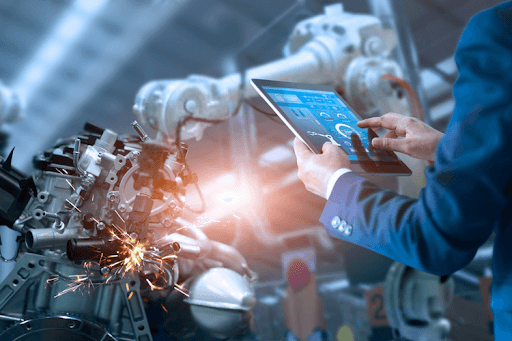How the Internet of Things (IoT) is Impacting CNC Machining

As the “Internet of Things” or IoT integrates into all walks of life, industries from healthcare to manufacturing are leveraging its power to collect data, optimize processes, improve logistics and supply chains, and boost production capabilities.
Industrial IoT (IIoT) is set to span across all sectors, bringing with it technology like embedded sensors and smart devices that connect to the manufacturing units for real-time monitoring and control.
As more industries lean toward CNC machining and IoT further integrates into the process, the global CNC machining market is estimated to grow from $83.99 billion to $128.41 billion from 2021 to 2028 at a growth rate of 6.3%.
With more industries opting for it, IIoT can drastically improve automated manufacturing processes like computer numerical control or CNC machining through robotics, artificial intelligence, and machine learning algorithms.
In the robotics capital of the world, Pittsburgh CNC machining services assist companies that are currently pioneering IoT-driven, intelligent robots to aid in industrial processes.
CNC machining services can simplify their processes and eliminate human effort and injury using IoT-powered collaborative robots or “cobots.” Successful industrial integration of IoT can revolutionize CNC machining to improve productivity, utility, and revenue generation.
How IoTIs Impacting CNC Machining
Here are some significant ways in which IoT is impacting CNC machining:
1. Improved Product Quality Control
IoT along with CNC machining allows each part of the product to be integrated with a sensor connected to a bigger network. This allows each step of the process to be monitored and controlled, enabling product tracking during and after production.
The sensors can also be used to detect defects during production. If an issue is identified, a process can be halted, changed, and resumed to ensure the highest product quality.
2. Remote Monitoring
IoT allows machine operators or the person in charge to conveniently interact with CNC machines using their smartphones, tablets, or other devices. Through IoT-based, real-time monitoring, operators can remotely track the process and machinery at any given time.
It additionally helps the operators detect problems and make quick decisions to schedule an automated inspection, repair, or change of parts and processes.
3. Predictive Maintenance
CNC machines connected with IoT sensors can be programmed to send notifications or alerts to operators if an issue is detected. The data collected through these sensors can also be used to analyze the condition of the machine, predict any future problems, and enable preventative maintenance.
Paired with robots, IoT-based CNC machines can be programmed to fix errors and synchronize with other machines. This minimizes human intervention and saves time and effort without affecting the production line.
4. Improved Efficiency Through Uptime Monitoring
IoT-based CNC machining is not limited to monitoring and maintenance. Real-time alerts using IoT systems can maximize CNC machine uptime and minimize downtime.
This increases the overall efficiency of the machines. The alerts or notifications provided by the machines can help operators proactively take measures to prevent an issue or component breakdown.
IoT-based machine uptime monitoring can also be used to operate multiple CNC machines with improved functionality and machine-to-machine synchronization. This ensures process optimization and increased productivity.
5. Fully Automated Processes
IoT can power robotic systems or cobots to work in conjunction with CNC machining. It fosters complete machine-to-machine interaction without any need for manual intervention.
Certain tasks may need manual labor. However, parts of the CNC machining process that may cause injury or hazard can now be fully automated. This allows workers to supervise production from a safe distance, eliminating the risk of injury or trauma.
Automated processes can help reduce labor costs and make overall manufacturing cost-effective.
6. Improved Worker Safety
With machine-to-machine coordination and pre-programmed robots, labor-dependent operations can be further simplified. As machines and robots manage dangerous operations, IoT-driven CNC machining improves worker safety.
7. Sustainable Production
IoT-driven CNC machining ensures that a precise amount of material is used for production, which helps minimize waste and improves the energy efficiency of machines. This also saves time and costs while improving accuracy and productivity.
The Future of CNC Machining
CNC machining is an already advanced and versatile process. CNC machines run faster than manual machines and can mass-produce high-precision products through computer-based programming.
On-demand manufacturing companies like Fictiv currently offer CNC machine services such as three-, four-, and five-axis CNC machining, milling, turning, or gear hobbing for a wide range of materials from metals to plastics. Considering the impacts of IoT on manufacturing, CNC machining will only become faster and more advanced.
Until then, technologies like IoT gateways, cobots, digitized factories, cyber-physical systems, robotic process automation, cybersecurity, virtual and augmented reality, artificial intelligence, and neural networks, and machine learning will continue to disrupt and upgrade CNC machining services and manufacturing.




